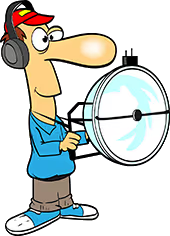What Is Reflected Sound and Why Should I Care?



A reflected sound wave is one of two situations, an echo or a reverberation. Both of these reflected sounds are not normally acceptable sound waves for your recordings.
The Sound Shark collects all the sound directly in front of it and focuses that sound onto your microphone. It does not know that you only want the sound within the first 10 feet, for example, to be heard. It also doesn’t know if that sound is bouncing off a flat surface on its way to the Sound Shark.
The point is that sound can bounce off of a smooth surface into your Sound Shark. For example if the surface is a smooth, flat, reflective surface parallel to the face of the Sound Shark, a sound coming from behind can bounce off of that surface and back into your Sound Shark.
The best way to reduce or eliminate the reflected sound is to point your Sound Shark in a way that there are no flat surfaces parallel to the face of the Sound Shark. This can be accomplished on camera but also consider the set up that allows the Sound Shark on it’s own stand. If you watch the video about Will Crockett’s Sky Deck Project you will see that Will points the Sound Shark downward at a steep angle so the noise that reflects off the flat wall is totally ignored by the Sound Shark.

Bringing the Distant Near & Keeping Your Vision Clear.



Can Your Mic Reach As Far Your Lens?



Bringing the Distant Near & Keeping Your Vision Clear.


Clear Vision in Seconds, No Contact Required!












